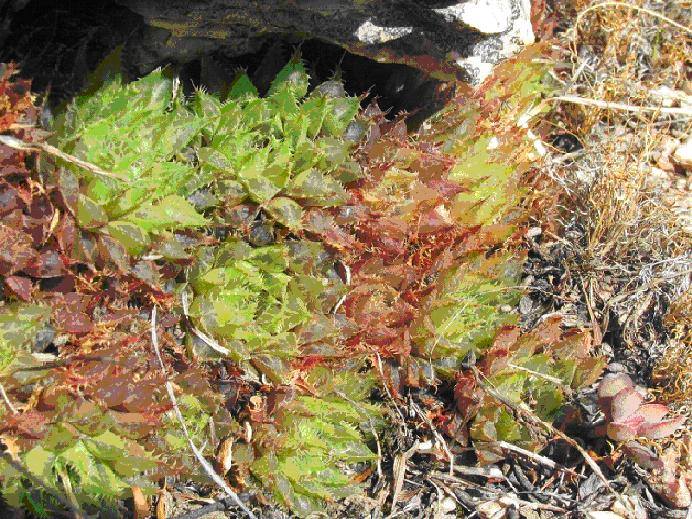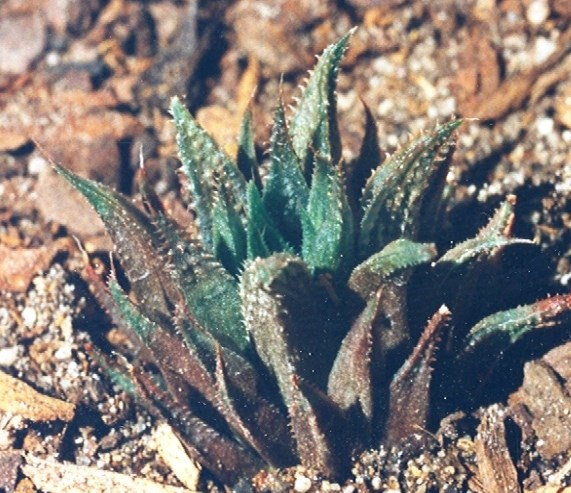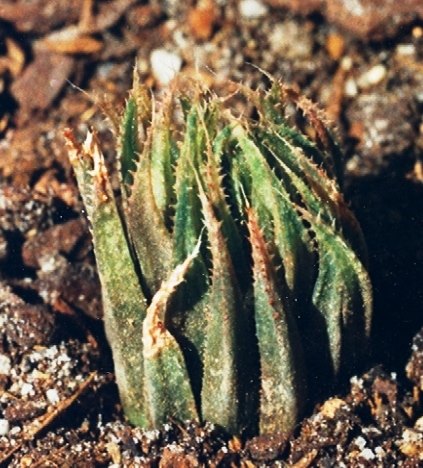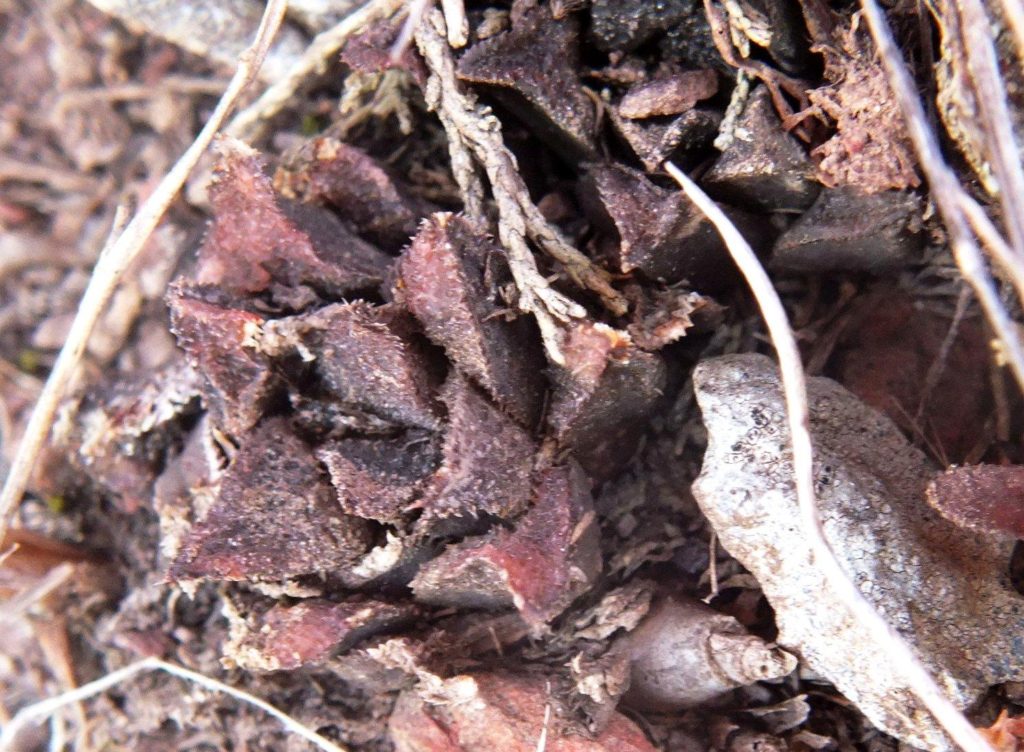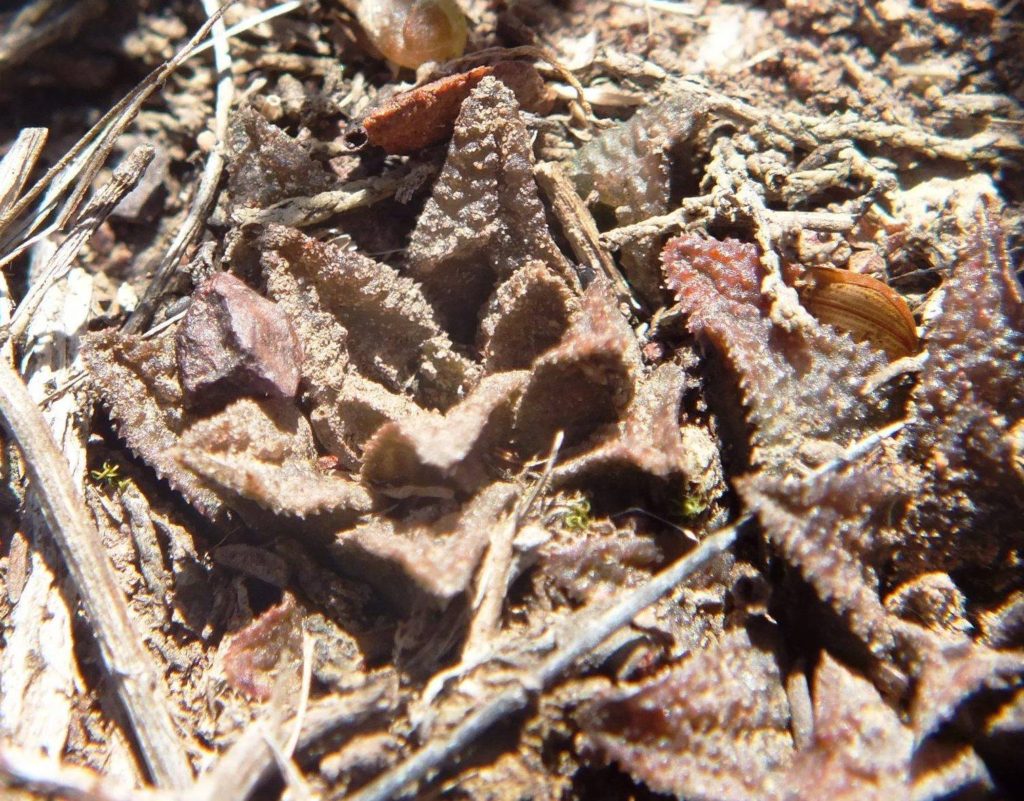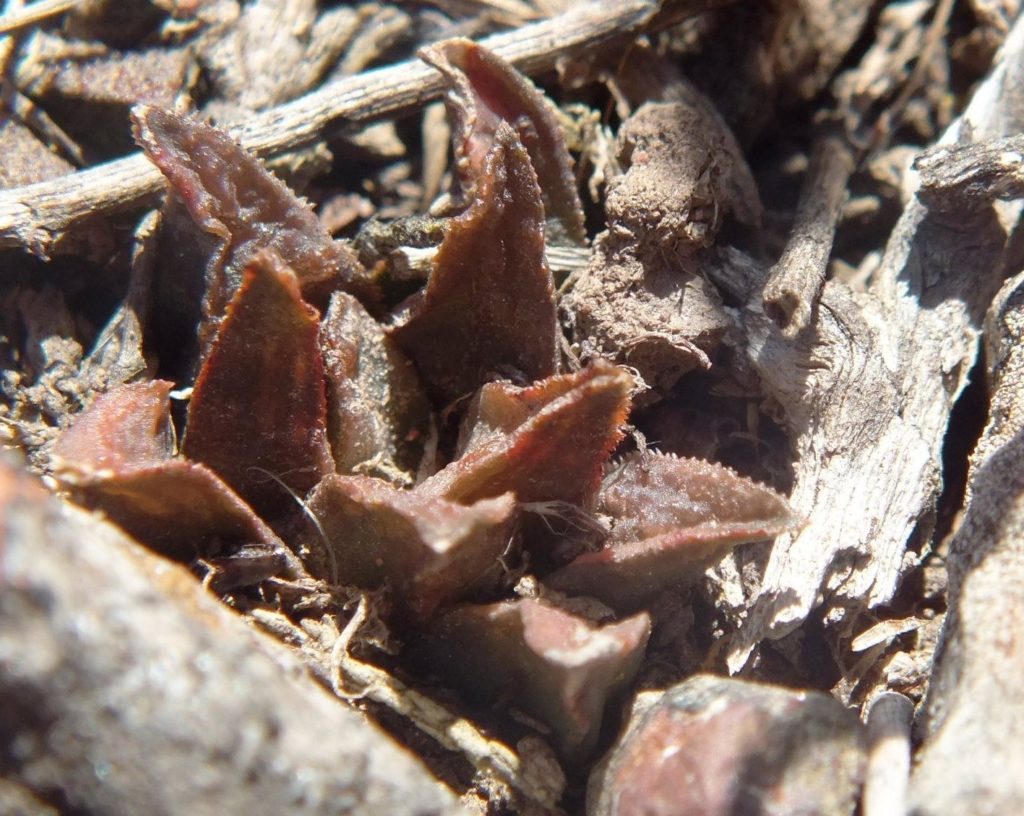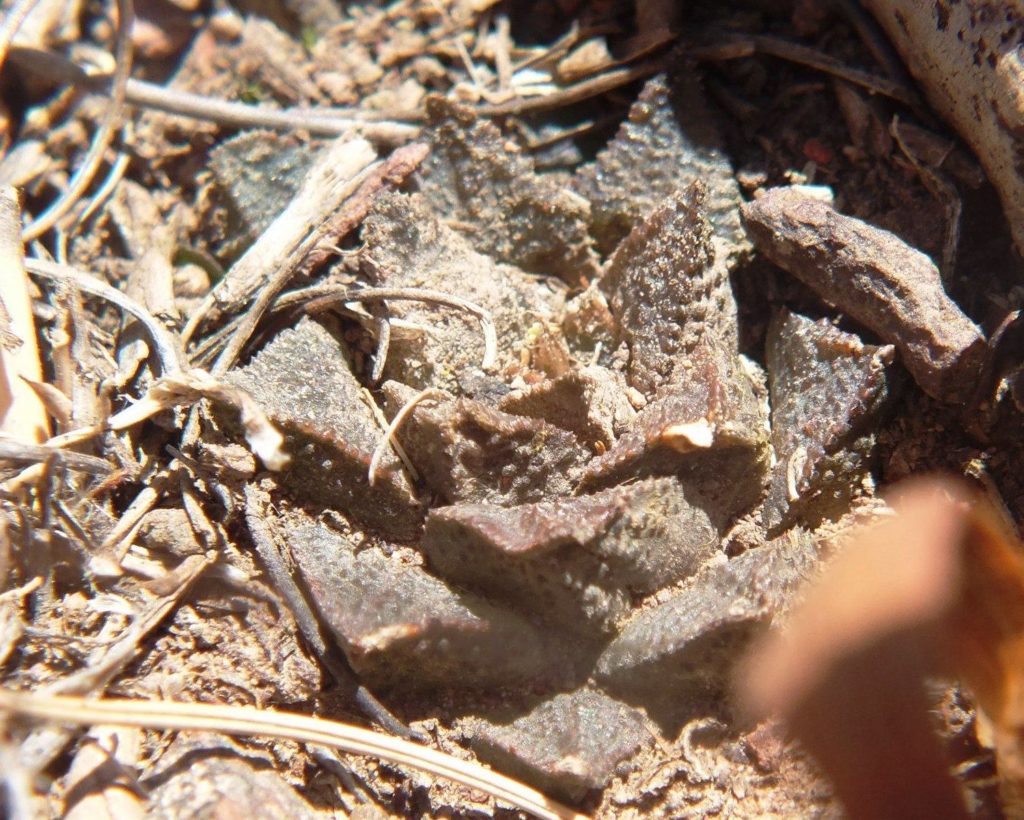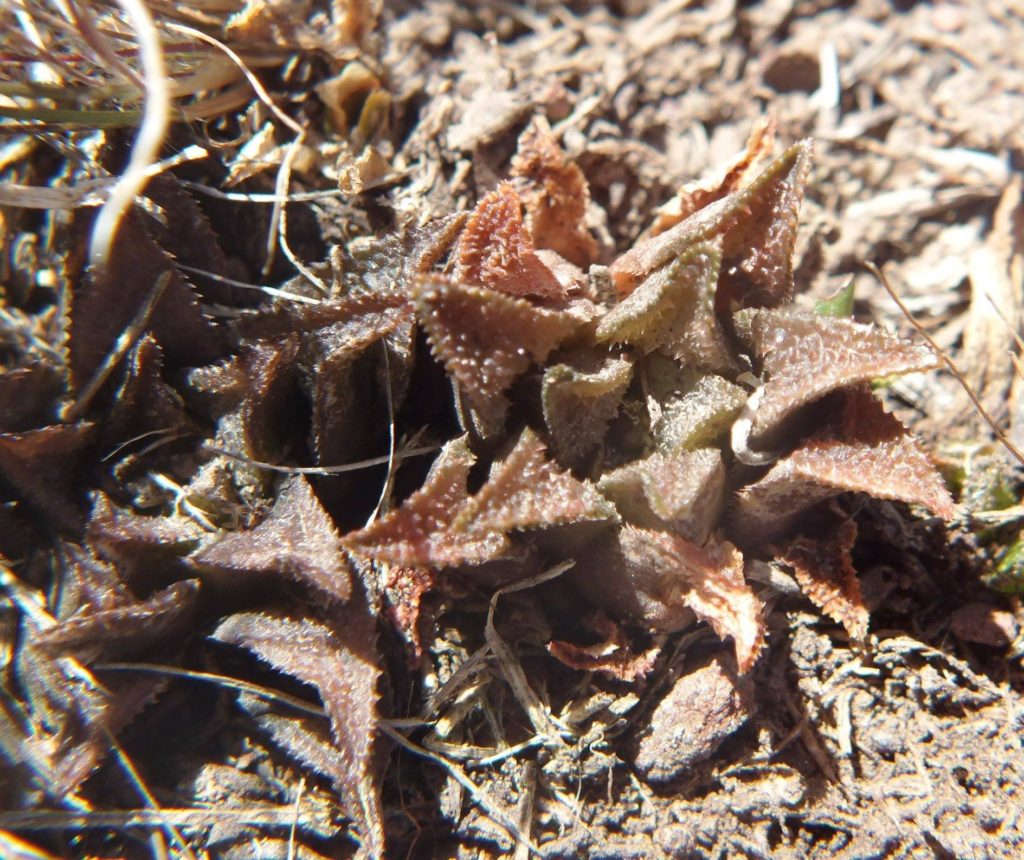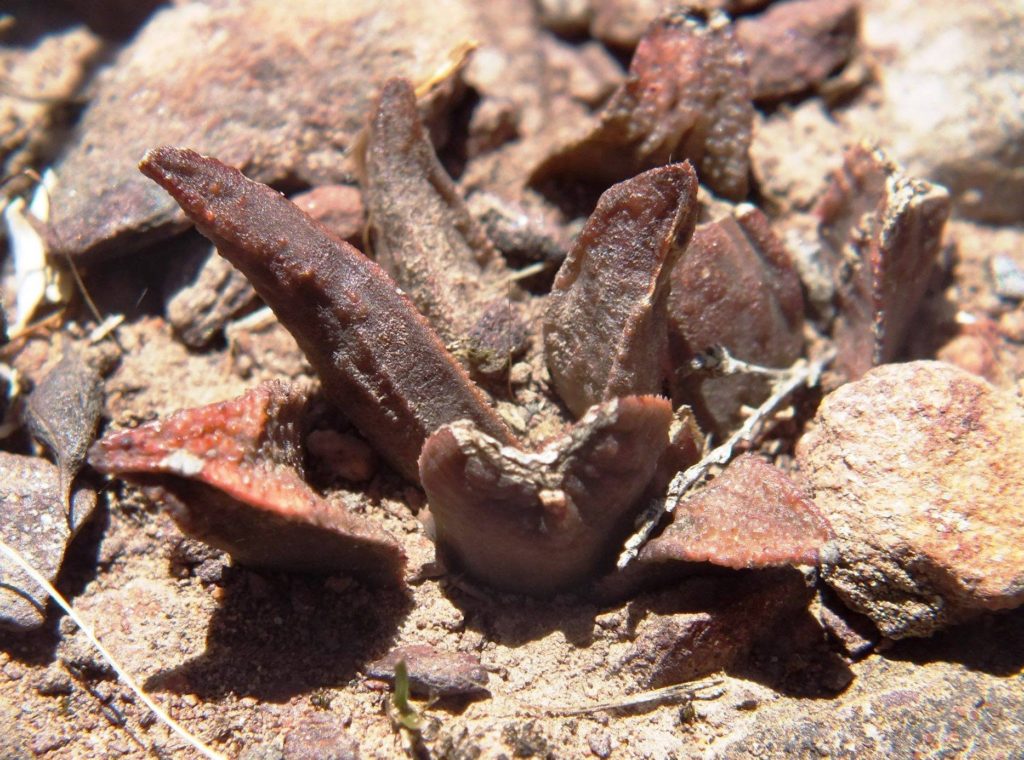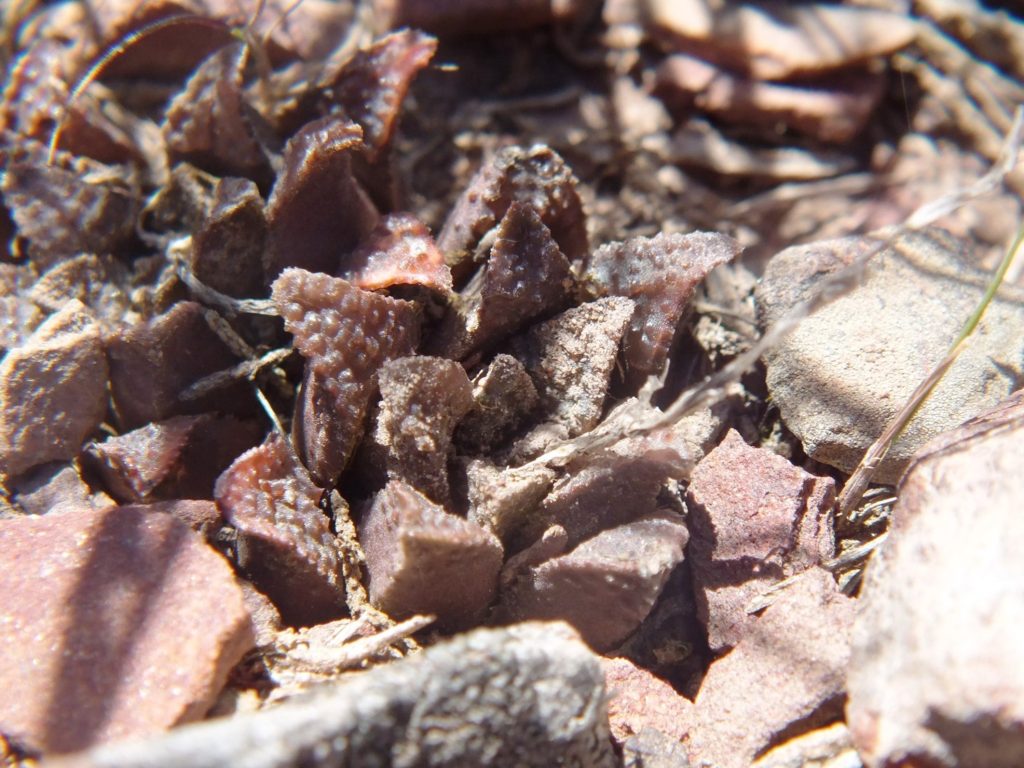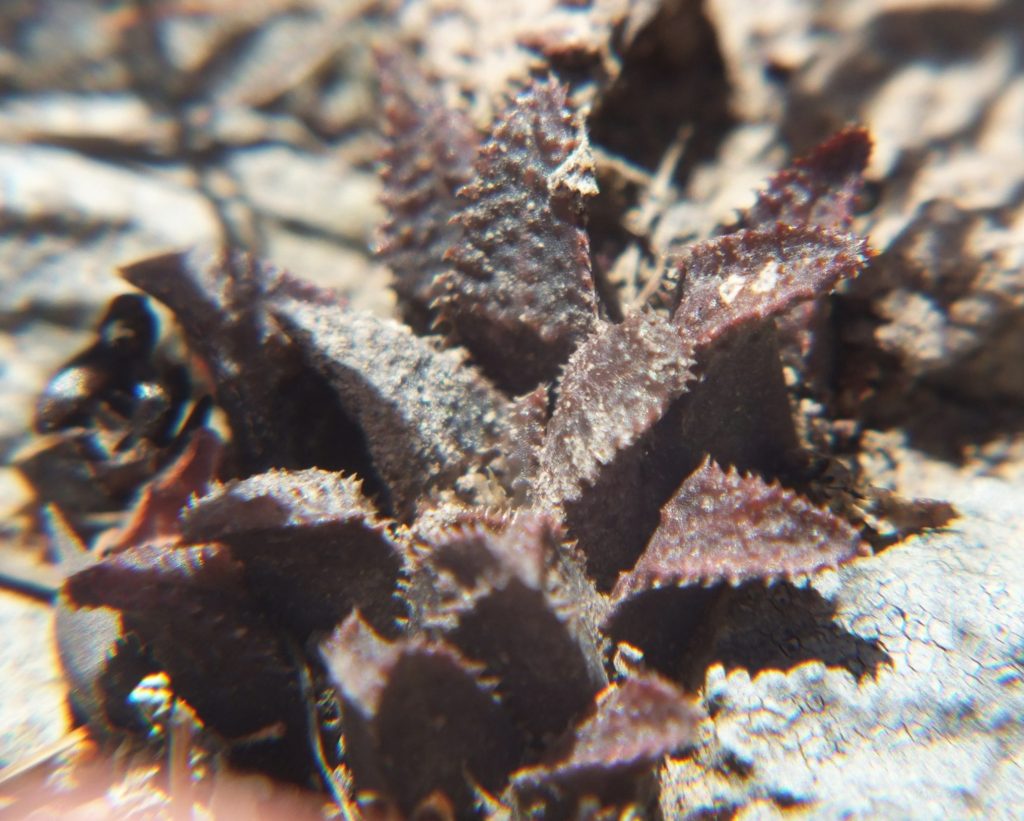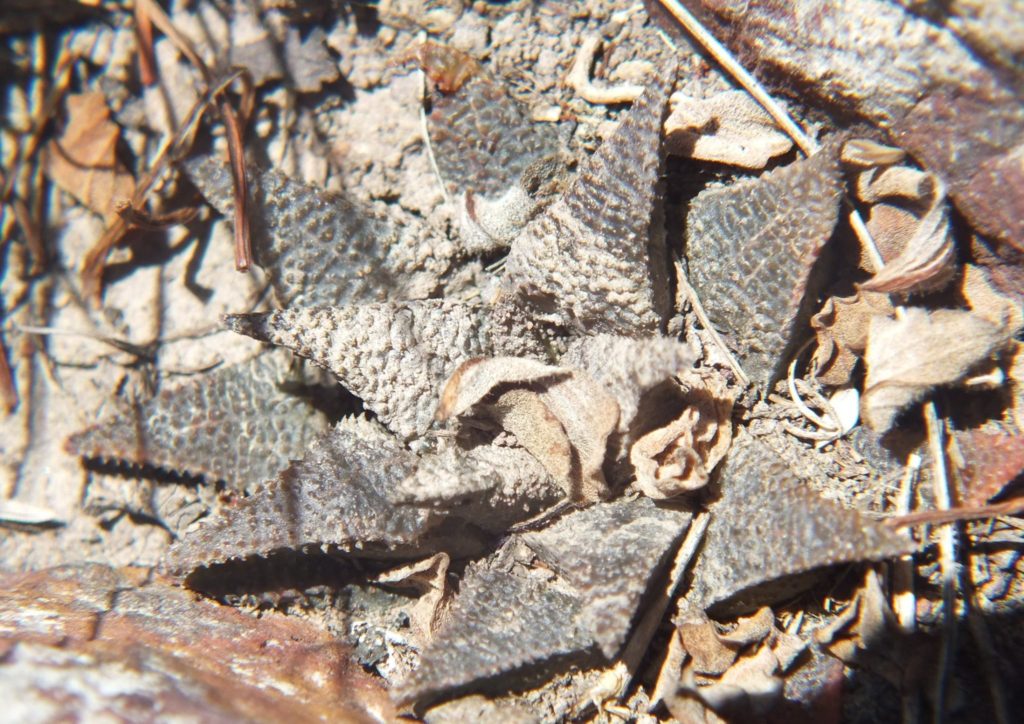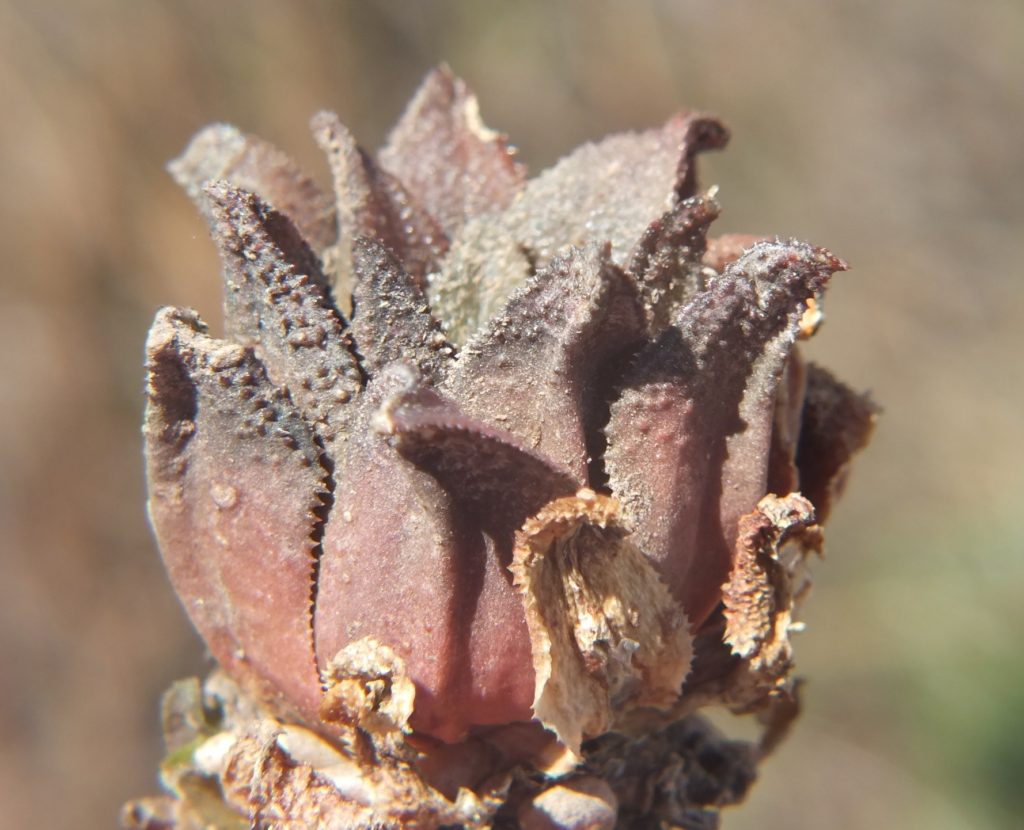83. 2019.8.19 – Another oddity is this elizeae up on the Bromberg near Stormsvlei. A little patch on a lonely sandstone shelf quite unlike H. mirabilis in the area with two plants shown here. The flowering time is November, and for lack of a better fit I think it may belong with H. rossouwii too. Note buds on the accompanying mirabilis plants in September.
84. 2019.8.21 – When I wrote Haworthia Revisited in 1996 H. heidelbergensis was barely known. Since then there have been so many new findings and observations it is almost impossible to detail all the complexities and subtleties associated with it in its later role as an H. mirabilis variant and a newer role as a H. rossouwii one. Or is it really an H. retusa variant? How does one do justice to these things when it is well-nigh impossible to quantify and describe such endless variation. But I was posting about H. rossouwii and I want to take just a few populations to illustrate how tough it gets. Here are three pictures of what was H. heidelbergensis var minor from JDV85/5.
I add a map and will go through 12 populations to try and show why I suspect that H. rossouwii is involved. This map position has H. rossouwii a few kilometers to the west, and about 35km to the east. Petrophila and calcarea are to the SE and elizeae well away to the NW. There are some other considerations too.

The point of this map is that exploration comes down to significant distance as short as 10 meters. When I started I was more than comfortable with sampling distances a lot greater than 10km.”
85. 2019.8.21, MBB8044 – In close vicinity. Pictures taken in February when all these flower and just remember that I suppose February flowering to be a mirabiloid dominant.
86. 2019.8.22, MBB6638 – Several 100m south and is “clearly” mirabiloid. These forms also occur several 100m N of what I referred to originally as H. heidelbergensis var minor (and lately as H. rossouwii var minor). They are also present a similar distance to the east. In the next post I will start about 3km west and show populations homing in on this “minor” thing.
By a curious coincidence I saw a ‘banned’ TED talk by Sheldrake. His concept of “morphic resonance” seems to offend a large element of the scientific community. But I think he is right and that here is a lot more to the question of energy fields than we might like to think.




